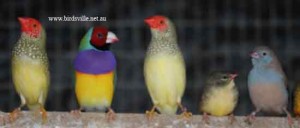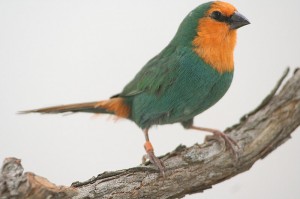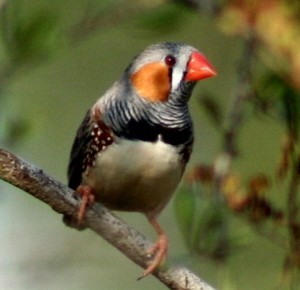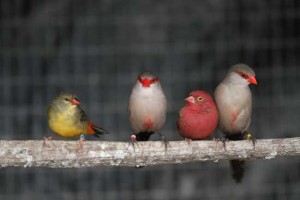Gouldian Finch for sale Sydney
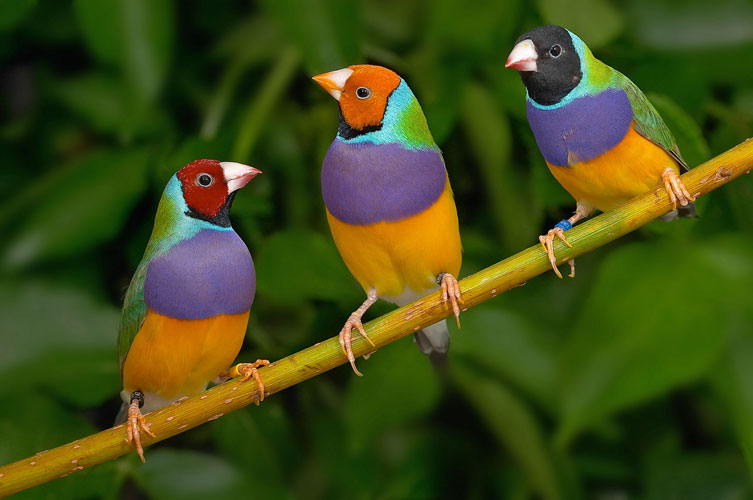
Gouldian finch also known as Goulds, Lady Gouldian and rainbow finch in other parts of the world are in my opinion one of the most beautiful birds in the world. These birds are not the hardiest birds and are susceptible to cold and stress. So a good diet, protection from strong winds and some basic medication these birds can be kept and bred with success by even beginners as long as the correct precautions are taken. If you have never had finches before you are better off starting with a pair of Manikins, Zebras or Cut throats before attempting to breed Gouldians.
Availability and Licencing
Available at Birdsville all year round. They no longer quire a licence from National Park and Wildlife Service (NPWS).
Natural distribution and habitat of the Gouldian finch
These native finches naturally occur in sparsely distributed populations across tropical northern Australia. They can be found in savanna woodland where there is open plains with seeding grasses and tall trees often close by mangroves and fresh water. They will migrate during the rainy season and return in the dry season.
Gouldian finches are very social and are often found in large flocks with there own kind and also flock with other finches as well. Unlike most finches they do not make there own nest but nest in tree hollows
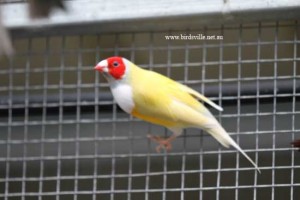
Sexing and Description of gouldian finches
Juvenile birds have a green back and grey underneath and can not be sexed visually until they are 12 months of age and are beginning to get the adult plumage. Sexing is not difficult with mature birds as the male has a very vibrant purple chest, green back, yellow underneath with a black/red or yellow head in colour compared to the similar but duller female. An easy way to sex them if you have a particularly bright hen or a mutation bird such as a white breasted yellow back is to simply look at the intensity of the yellow on the bottom of the bird. If it is bright yellow it is a cock. If it is a dull lemon colour it is a hen.
Length 129-141 mm long.
Gouldian finches naturally come in 3 natural colour variations in the wild which is unusual for any animal in the past they were not sure if they were the same species. They are in fact natural occurring mutations. The black headed which is the most common in the wild, the red headed which is 1 in 4 and the yellow headed which is not as common.
Selecting your birds
Choose good strong Healthy pairs of birds with good breast condition, at least 9 months old, good feather and a clean vent.
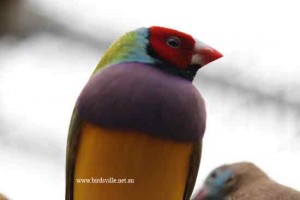
Diet of gouldian finches
Seed– First of all give them a diet of a good fresh seed mix. These is of up most importance especially when dealing with delicate species of finches such as Gouldians. If you are unsure of the seed mix you are using consult a bird specialist. Many super market mixes are of low quality despite promises of vitamins and variety of seed.
Soaked seeds– Relished by finches make sure you wash thoroughly with aviclens before feeding to any finches to remove bacteria.
Millet Sprays– All fresh sprays are great but the best for gouldians would be french white.
Greens are important for Gouldians especially around breeding. green can include seeding grasses, chick weed, Lebanese cucumber, silver beet, dandelions, flowering heads of milk thistle and endives
Vitamins should only be added to the water supplied. If it is in the seed it will be wasted. There are many good brands with the appropriate vitamins to keep the health and vitality of your gouldians.
Grit– Very important for the growth of good feathers and egg production of hen Gouldian finches. Use a good mix which contains limestone, baked egg shell, charcoal and fine shell.
Live food– Meal worms, fly pupae or termites. Serve with a few pinches of insectivore mix. Especially important for breeding Gouldian Finches.
Egg and Biscuit formula – A good addition to your Gouldians diet all year long especially when breeding. This can be fed in the same conatiner as the live food above.
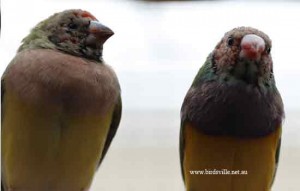
Breeding gouldian finches
Gouldians have a breeding season which means they are not free breeders. They will breed from December through to April. I personally did not place my nest boxes in the aviary until the 1st of January. Gouldians prefer to breed in nest boxes which i found to be the best way to breed them, to encourage them to breed i placed some nesting material inside and made a fist inside the nesting box to make it more inviting for the pair of birds which are about to breed.
Set up proper breeding environment there are 2 ways to set up. One is a colony set up which I personally prefer where there is many pairs set up in an aviary. The second way is one pair per cage. In a colony set up make sure there is more nest boxes than pairs. Also evenly space out the nest boxes.
A few months before gouldians are ready to breed, begin feeding them a breeding high protein diet with an egg and biscuit mix, meal worms and added calcium ( All available at birdsville) with added finely chopped greens and vegetables.
I have found many in the past few years are slowly becoming free breeders as captivity has a ready supply of food all year round as an adaptation over time more and more birds will breed any time of year.
*Note: We receive many phone calls from people around Australia in the colder months because there Gouldians have un sightly bald patches These birds can sometimes go through a very heavy moult and lose patches of feathers all over their body usually during the winter months and early spring. As soon as they finish moulting usually in november all the feathers usually come back good as new. It is especially Important to increase vitamin supplement while birds are moulting.
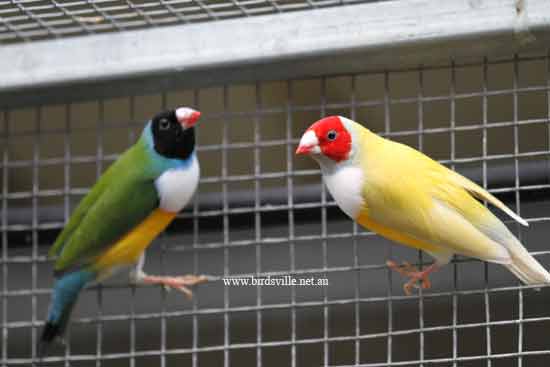
More information coming soon.
Found in store, for more details call Birdsville 9667 2555.
